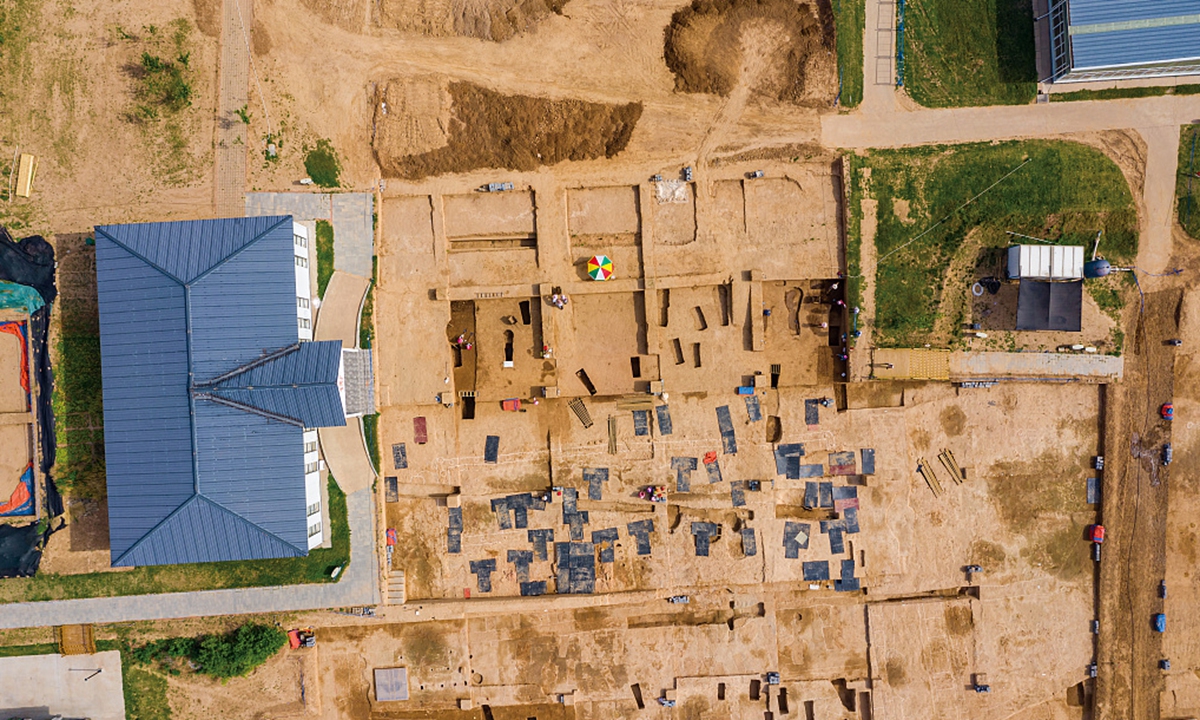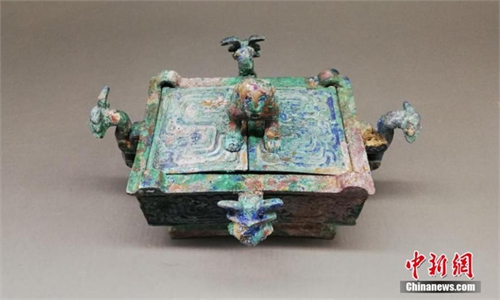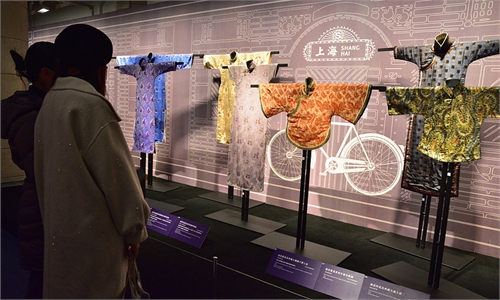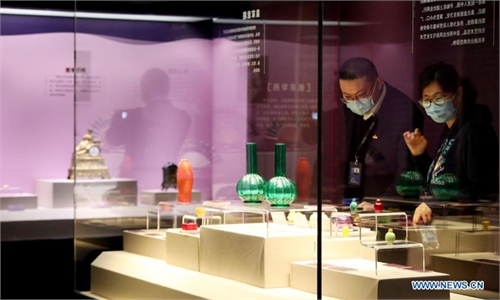
Photo: VCG
The ruins of a large ancient building complex showing characteristics of early Chinese palatial architecture has been discovered in Gongyi, Central China's Henan Province, providing a hint as to what large-scale palaces looked like 5,000 years ago.
The "palace" was built upon a huge solid rammed-earth platform some 4,300 square meters in size. The platform was covered by dense architectural units, which clearly reveal the layout of two large courtyards.
One courtyard situated at the western part of the platform is more than 1,300 square meters in size and rectangular in shape. A large plaza nearly 880 square meters in size found outside the south wall of this courtyard. It is speculated that its front area was for administration activities while the back area was a place for rest and relaxation.
"It is for the functional divisions of a palace, and shows a basic layout of ancient Chinese palace," said Xu Yitao, a professor specializing in architectural archaeology at the School of Archaeology and Museology of Peking University told the Global Times on Monday.
"However, it is necessary to further confirm whether or not the palace had such a division, because even though there was one building in the front and another in the back, it would not be proper to assume the front one was definitely a place for administration and the back one was for relaxation.
And it can be somewhat difficult to prove this as well, because the nature and functional divisions of architectures in the early periods of dynasties such as Xia [C.2070BC-C.1600BC], Shang [C.1600BC-1046BC] and Zhou [1046BC-256BC] were not always certain," Xu emphasized.
At the east side of the huge rammed-earth platform is another courtyard that is 1,500 square meters in size. Three doorways have been found near a door located close to the south wall of the courtyard. The 'one door, three doorways' was a classic form of architectural design for high-class buildings in ancient China.
Compared to the palace discovered in Henan Province's Erlitou site, which dates back to the Xia (c.2070BC-c.1600BC) and Shang (c.1600BC-1046BC) dynasties, the new discovery has moved the emergence of China's palace system back by about 1,000 years.
The palatial ruin belongs to the Shuanghuaishu site in Henan. The ruins are vast in size, about 1,500 meters long from east to west, and covers a total area of 1.17 million square meters. The ruins of Shuanghuaishu date back to about 5,000 years ago and reveal the historical image of the middle and late phase of the Yangshao Culture that existed during the Neolithic Age.
In addition to the recently discovered palatial construction, valuable relics were also discovered at the site in May 2020, including a piece of sculpture made from boar tusk shaped like a silkworm, which has been listed as a national-level cultural relic.



